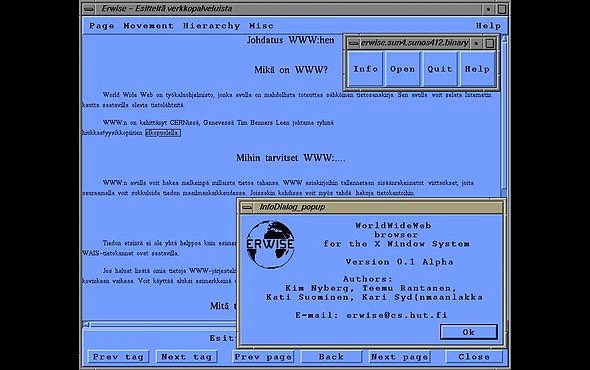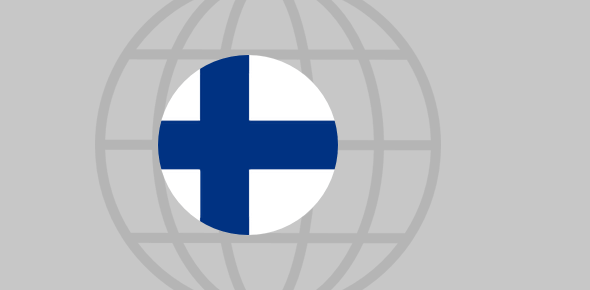Sometimes success depends a lot of fate! Who you are, where you work and stay, the people you interact with etc., determine whether your idea/product will ultimately become a hit or simply be a side note in history. The story of Erwise, the world’s first graphical web browser, illustrates this beautifully. Chances are, you probably don’t even know of this nifty piece of software.
Erwise should have been the one that popularised the web. In fact, at the start, it had everything going for it. But Lady Luck just dealt a bad hand. Sort of reminds you of Marlon Brando’s character in On The Waterfront.
Sponsored Links

Image Source: Screen-capture of scene from the movie On The Waterfront.
The developers of Erwise browser – the right people!
The stage was new. The web had just been invented by Sir Tim Berners-Lee at CERN in Switzerland. He and his colleagues, most notably Robert Cailliau, were busy spreading the word around and compiling standards for the web. Though a few browsers had been developed, they lacked in compatibility and/or ease of use.
For the web to become popular, Berners-Lee knew that the need of the hour was a GUI-based browser – one that can run on multiple operating systems, and more importantly, be easy to use for the technologically-challenged. You see, personal computers were also kind of new back then!
Since Berners-Lee and his colleagues didn’t have time to create new browsers, they coaxed others to do so. Realising that browser development could be a great topic for projects, they started visiting universities in Europe.
Sometime in 1991, Robert Cailliau visited Helsinki University of Technology. Four enthusiastic young undergraduates were mightily impressed on meeting him and decided to develop a browser for their thesis.
Kim Nyberg, Teemu Rantanen, Kati Suominen and Kari Sydänmaanlakka began working under the guidance of Ari Lemmke. In their hearts they knew it was a “big thing”.
The right place and the right time!
Erwise was released on 15th April 1992. It was written for the Unix X Window System and had about two thousand lines of code. The four students received top marks from their professor. After all, there were only a few browsers in the world at that time.

Image Source: By Source, Fair use, https://en.wikipedia.org/w/index.php?curid=24471738
The developers were fortunate to be involved in a field that was new. They had the first-mover advantage – Erwise was the world’s first graphical web browser. They were also lucky to be in Finland and studying at the Helsinki University of Technology. You see, Finland at that time, was one of the leaders in information technology. Linux, Short Message Service (SMS) and Internet Relay Chat (IRC) were great innovations from the country and the FUNET (Finnish University NETwork) had been set up almost a decade back.
So, not only was Erwise developed at the right time, it was also at the right place, as far as technological advances were concerned! More on this below.
Features of Erwise
Erwise had a lot of novel features. These may seem ordinary nowadays but back then, the software was revolutionary!
- It was the world’s first graphical web browser, which meant you use the mouse to click on a link to be taken to another webpage.
- You could also search for text within a page.
- The browser also had a rudimentary search engine facility built into it. You could search for text on other web pages and not just the one loaded in Erwise.
- Different pages could be loaded together.
Why didn’t Erwise succeed?
Erwise was released almost a year before NCSA Mosaic, the browser credited for popularising the web. What were the reasons it not pick up steam?
This brings us to the notion of “fate”. Being the first or extremely good doesn’t guarantee success. A lot of factors come into play for something to become a hot commodity. The world, after all, is full of variables.
Even though Finland was one of the top countries in technological advances, it was facing a bad recession. There was virtually no money to be doled out. Universities could barely make ends meet and angel funding was non-existent.
There was no way the students could commercialise Erwise or even continue working on their software. Though steady paying jobs were scarce, Nyberg, Rantanen and Suominen were picked up by Tekla Corporation. Kati Suominen, now Kati Borgers, got out of technology and opened a children’s clothing store. Erwise just faded from their lives!
And Erwise simply remained in the realm of Unix X Windows. It was never ported to other operating systems. Sir Time Berners-Lee once tried to fiddle around it but couldn’t make any decent progress because the majority of documentation was in Finnish.
This is so much in contrast to the what happened to NCSA Mosaic in the US.
Marc Andreessen partnered with Jim Clark and founded Mosaic Communications (later Netscape Communications). Many of the original Mosaic developers also joined the company which received a whole lot of funding from Kleiner Perkins Caufield & Byers.
Mosaic soon grew into Netscape Communicator, which went on to rule the web with close to 90% market share just before the first browser war.
End Note #1: The “weird” name of the Erwise browser comes from the English word ‘otherwise‘ because Ari Lemmke wanted to name it “something else”.
End Note #2: Ari Lemmke, the supervisor of Erwise developers at HUT, is credited for naming the Linux operating system.






